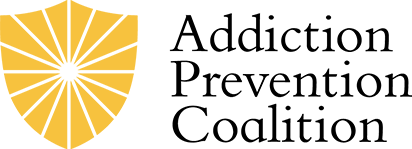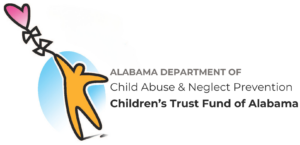
From the moment our newborns are nestled in our arms, we do everything in our power to protect our children. We brush off snarky terms like “helicopter parent” and “snowplow parent,” knowing in our hearts that our commitment to the well-being of our kids matters more than the perceptions of teachers and other adults in their lives. Yet it is that same devotion to our children that can blind us to the symptoms of substance use disorders. On one hand, there’s magical thinking: “Drug addiction happens to other families, not to mine.” On the other hand, there’s the reality that many of the telltale signs of drug or alcohol abuse can be easily mistaken for typical adolescent behavior.
Taking the blinders off involves learning the ways in which teenagers are particularly susceptible to the temptations of drugs and alcohol, and being on the lookout for changes that signal your child may be engaging in substance use or abuse.
All Families are Vulnerable
The argument that teen drug or alcohol use “couldn’t happen to us” is undercut by staggering numbers. Ongoing research funded by the National Institutes of Health has found that 18 percent of eighth graders have taken an illicit drug at some point in their lives. By the time kids are high school seniors, that number jumps to 49 percent. While many have smoked marijuana, 9 percent of eighth graders and 19 percent of twelfth graders have tried other illegal substances, ranging from inhalants and hallucinogens to ecstasy, methamphetamine, and heroin.
Alcohol use among teens is equally troubling. Close to one in four eighth graders has used alcohol, and 9 percent report having been drunk. That number skyrockets in high school, with 62 percent of seniors having imbibed and 45 percent having gotten drunk.
The Seeds of Addiction
Researchers exploring substance abuse have pinpointed adolescence as the time when a person is at the highest risk for developing problems with drugs and alcohol use. There appear to be three buckets of risk factors: genetic, environmental, and the interaction of the two.
On the genetic front, children of parents who have substance abuse disorder are more likely to develop addictions. Adolescents – particularly boys – who have cognitive, behavioral, and emotional difficulties are also at higher risk. Certain types of diagnoses, such as conduct disorder, ADHD, depression, and oppositional defiant disorder, appear to increase the odds of developing a substance use disorder.

The potential for addiction is also influenced simply by the way a teenager’s brain develops. There are brain pathways relating to rewards and motivation that haven’t yet matured, and certain brain wave patterns in boys or their fathers are associated with greater adolescent substance use disorder.
The circumstances of a teenager’s life can also dramatically impact their susceptibility to alcohol and drug abuse. Physical abuse, sexual abuse, and other traumas can trigger emotional and hormonal changes that increase the likelihood of substance use. Teens whose parents are not actively involved in teens’ lives are at greater risk, as are those whose parents drink or use drugs. Unsurprisingly, the other environmental factor that dramatically influences a teen’s drug and alcohol use is the company they keep. Adolescents whose friends engage in substance use tend to do the same – though it’s unclear whether the cause is peer pressure or whether a teen seeks out likeminded friends.
The impact of the interaction between genetic and environmental factors follows common sense. Teens with the lowest risk of substance abuse tend to have parents that didn’t start using tobacco, alcohol, or drugs at an early age, and whose parents don’t have emotional, behavioral, or cognitive problems. Those with the highest risk are likely to have two parents with substance abuse disorder who started using at a young age and who have cognitive, behavioral, or emotional difficulties.
Signs & Symptoms of Substance Use
As even the most well-intentioned parent, you can’t control the genes that are passed down to your child or the timing of your teen’s brain development. However, you can be vigilant in watching for the signs and symptoms of substance use. Identifying alcohol and drug use, and then intervening early, can put adolescents on the path to sobriety.
According to Latrice Dailey, Adolescent Counselor at Beacon Recovery, a UAB Medicine-affiliated outpatient substance abuse treatment program for adults and teens ages 13 to 18, you can find clues about adolescent drug and alcohol use by looking at your teen’s physical and mental health, and at the way they interact with the world. “If you dismiss the early signs, they will get worse,” said Dailey. Here’s what she advises parents to watch for:
Physical Symptoms
- New or frequent nosebleeds
- Dilated pupils or bloodshot eyes
- Changes in sleep habits, such as staying up all night or sleeping all day
- Dental issues, such as bleeding gums, tooth loss, excessive tooth decay, or bad breath
- Rapid weight loss
- Clumsiness or unexplained bruises and injuries
- Poor personal hygiene, such as skipping showers, not brushing their teeth, and wearing dirty clothes
Mental Health Symptoms
- Rapidly changing moods, such as from happiness to sadness, from tranquility to rage, or from agitation to lethargy
- Increased anxiety, evidenced by jitteriness, pacing, restlessness, poor sleep, or irritability
- Depression, which might manifest as weight loss or gain, sleeping too much, talking about death, or losing interest in hobbies
- Paranoia, evidenced by suspicion of people’s motives, mistrust of trustworthy people, imagining criticism, and getting defensive
Social Symptoms
- Vagueness or lying about their behavior or whereabouts
- Withdrawing from family members and longtime friends
- Needing money, refusing to discuss how they spend money, or stealing money
- Doing less homework, getting poor grades, and having unexcused school absences
- Switching out friends, hanging out with a new group of friends, or refusing to let you meet their friends
- Secrecy, secret behavior, or isolation
- Refusing to accept discipline or feedback
While many of the symptoms of adolescent substance use can mimic behaviors that teens tend to exhibit, any physical, mental health, or social symptoms are worth further exploration. While drug and alcohol use lies on a spectrum ranging from experimentation to problem use to addiction, Beacon Recovery’s Latrice Dailey pointed out that it’s a slippery slope from one to the next. “Because of adolescent brain development, and normalization by family members and peer groups, drug and alcohol use can easily become a habit,” she said. “Any substance use in adolescents is a problem, so as a parent you want to be able to recognize the signs and help kids get back on track.”
If you suspect your child has a substance abuse issue, call Beacon Recovery at (205) 917-3733, to schedule an appointment for an assessment.









